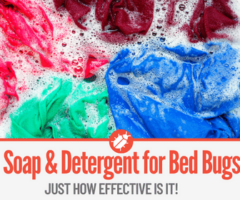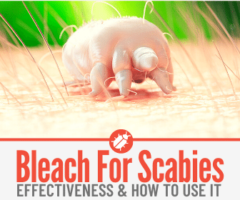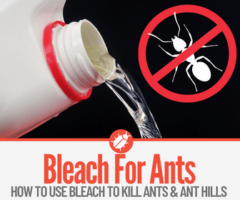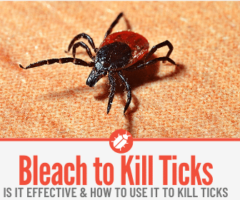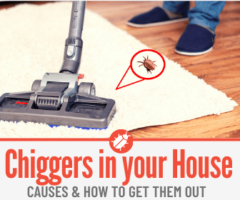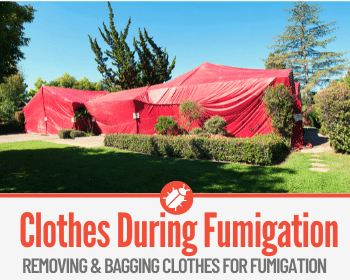 Hundreds of people choose to fumigate their homes yearly. If you’re one of the many who’ve chosen to fumigate, you might be trying to find ways to protect your most valuable assets.
Hundreds of people choose to fumigate their homes yearly. If you’re one of the many who’ve chosen to fumigate, you might be trying to find ways to protect your most valuable assets.
From furniture to knick-knacks, most items in your home can be covered or removed from your residence, but what about your clothes?
Types of Fumigation
As I’m sure you’re aware, there are multiple forms and base components your exterminator might be using. Hopefully, after a consultation, you’ll be aware of what they’re using and where so that you can prepare your items and clothes accordingly.
However, for those of you reading this prior to your consultation here’s what you can expect most fumigants to be made of, as well as their level of danger concerning your home and your clothes:
1.Solid Fumigants
These fumigants are carried out through dispersing tablets, powders, or pellets in the designated area. The most popular chemical components are Aluminum Phosphide and Calcium Cyanide.
Aluminum Phosphide eliminates all bugs and/or pests in all stages of life. Calcium Cyanide remains a popular chemical due to the range of pests it can be used for.
How can it Affect your Clothes?
The probability of getting residue on your clothes from Solid Fumigants such as tablets, or sprinkling powder on your floor is highly unlikely.
Your clothes run a higher risk of being turned into a bug graveyard than getting contaminated by solid fumigants.
The reason being that solid fumigations are best used in corners of the home and under major furniture.
Assuming you fumigate your house in its entirety, the fumigants will only influence your clothes through odor, as solid fumigants don’t expand in the space in which their placed. Bugs must approach the designated area.
For any fumigants, bagging your clothes is a good precaution. You can choose to wash and sanitize at your discretion.
2.Gas Fumigants
Gas fumigants are often the most popular with modern pest control companies such as Orkin. Common chemicals used through commercial sprays include Methyl bromide and Sulfuryl Fluoride.
Methyl bromide is used to control rodents, termites, insects, nematodes, and weeds; while Sulfuryl fluoride controls pests in grains, tree nuts, and fruit.
The danger of encountering these, however rare it may be, can cause stomach pain, vomiting, difficulty breathing, confusion, low blood pressure, convulsions, low blood calcium levels, an abnormal heart rhythm, and death.
How can it affect your clothes?
Gas fumigants are possibly the hardest to be sure of when it comes to contamination with your clothing.
Because they aren’t typically as concentrated, you may only want to wash your clothes once or twice to rid yourself of any deceased pests or unwanted chemicals.
Precautions are heavily recommended to protect your clothes from contamination, which is highly likely in a home being fumigated through the dispersion of gas-like chemicals.
3.Liquid Fumigants
These fumigants are dispersed through a spray that can be very flammable, and toxic to humans. There are multiple versions commonly used in today’s market.
Carbon disulfide is one of the commonly used fumigants in this section and is known for creating problems within the reproductive parts of the body.
How can it affect your clothes?
Liquid fumigations are often the most concentrated, thus protecting your clothes is a requirement to getting your home fumigated with liquid fumigants.
The more concentrated your fumigants, the more harm that can be caused through disregarding safety precautions.
Common household fumigants don’t typically leave behind residue on items and clothes however, dead insects within your home can cause slight discoloration and/or staining as well as health concerns involving close contact with insects through the use of fabric.
Seeing as clothing is usually used as a last resort hiding place for these at home pests, it would definitely be wise to invest in some sort of protective measure to ensure that you’re clothes stay bug free in the midst of fumigation.
Do you need to Remove Clothes for Fumigation?
Removing your clothes isn’t the only option you have when it comes to protective measures you can take for the fumigation process.
If you choose to keep your clothes in your home, it is recommended that you bag your clothes in air tight bags.
Bagging your clothes will take some time, however the bags will act as an impermeable surface upon fumigation. Thus, keeping the pests off all clothing as fumigants don’t stick to any one surface during fumigation.
Removal of your clothing can be done at your own discretion.
How to Prepare your Clothing for Termite Fumigation
Termite fumigation isn’t necessarily harmful to you however close contact of termites can create damage in your clothes once the termites die.
To keep termites free from making your clothes their personal graveyard, you can protect your clothes by placing them in sealable containers such as plastic bags or containers.
If bagging all clothing seems to be a lot of hassle, you should at the very least clear all cabinets or wooden furniture from your clothes. Closets should be fine, however it’s wise to bag it if it’s valuable to you.
You can purchase bags to place your clothes in prior to the fumigation, or a clothing sanitation spray to use.
Certain fumigation places will provide you bags should you ask. Once again since the chemicals themselves won’t be sticking to the surfaces, bagging your clothes will only ensure that bugs stay out of your clothing.
It is also important to note that termite fumigation won’t be harmful to your clothes as it doesn’t cause discoloration or thinning of the fabric.
What Clothes Need to be Bagged for Fumigation?
While bagging your clothes is optional you can save your wardrobe from being a hiding space for pests.
In the event you choose to go through with your fumigation, it’s safe to say that all clothing should be safely guarded.
However, if you are low on funds and you know how your clothing will or won’t be affected you can get away with bagging only the clothes that are left out in the open.
For fumigation outside of termite problems, your clothes are safe in your pieces of furniture.
Choosing the bags to store your clothes during the fumigation
If you choose to bag your clothes prior to your fumigation, you’ll want to purchase any bags that are resealable, with a water-resistant property. The bag type isn’t important if it falls within those barriers.
In some cases, your exterminator will be able to provide them for you.
Nylofume bags are typically the type of bags provided by leading fumigators and are used to protect items such as food and medicine during Fumigation.
These bags are fully waterproof and contain an odor-resistant barrier, thus making them ideal for home fumigations.
Do you Need to Wash Clothes after Termite Fumigation?
Washing your clothes after fumigation is completely optional. Termite fumigation is usually done by spraying the fumigant around the home.
As previously discussed, the gas fumigant doesn’t stick to any one surface, therefore your clothes are safe.
If you choose to wash your clothes, there will be no side effects of touching your clothing once you return home after the fumigation process has been taken care of.
Washing your clothes should be done if no safety precautions such as bagging took place, to prevent stumbling into dead insects while getting dressed one day.
If bagging took place or you were able to fully remove your clothes for the fumigation your clothes are safe to be unpacked and worn.
The cleaning cycle for your clothes after a fumigation is not much different than a normal laundry day. Prior to washing your clothes, you should inspect your clothing for pests, or signs of contamination.
The rest of the wash cycle is normal.
Still… Is there any way the Fumigation Process can Destroy my Clothes?
Your clothes are completely safe during the fumigation.
The chemicals sprayed in your home during a fumigation doesn’t put your clothes at risk to be damaged or discolored over time; and all the safety precautions listed above should allow for a risk-free fumigation.
Therefore, there is no need to stress over your clothing protective measures too much.

